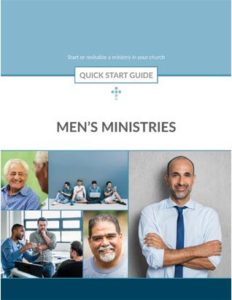- Determine how many men are in the church by figuring 40% of the adult attendance.
- How many men, whom you are aware of, are active in men’s ministry or men’s small groups?
- This gives a general idea of how many men are not experiencing the support and encouragement of “shoulder-to-shoulder” relationships with other men.
- It also helps to discern how effective any current outreach to men is.
- The number of pastors in your church indicates the many responsibilities they carry and how increased lay leadership–from men and women–can help advance the mission of the church.
- Knowing the general theological and practical values of your church helps identify the men’s ministry models which have the same philosophy of ministry, and values. Try to understand these differences so that you do not erect unnecessary barriers with church leadership.
- Insight into the ethnic and cultural compositions will identify the history each man has. Try to understand some of the cultural and racial pains, both historical and present, so that you can experience healing as brothers in Christ. Do not attempt to impose other models on another group of men with different cultures and interests. (e.g., a Southern California white middle class men’s ministry model will not fit a multi-ethnic inner city church in Chicago)
- In terms of age, it is important to understand how the age composition of the men affect things like meeting places and times. Men over the age of 50 are more likely to sacrifice a Sunday morning to be with other men. On the other hand, men under the age of 50 would rather meet on a week night, thus not sacrificing a Sunday morning with their children.
A Game Plan for Starting
